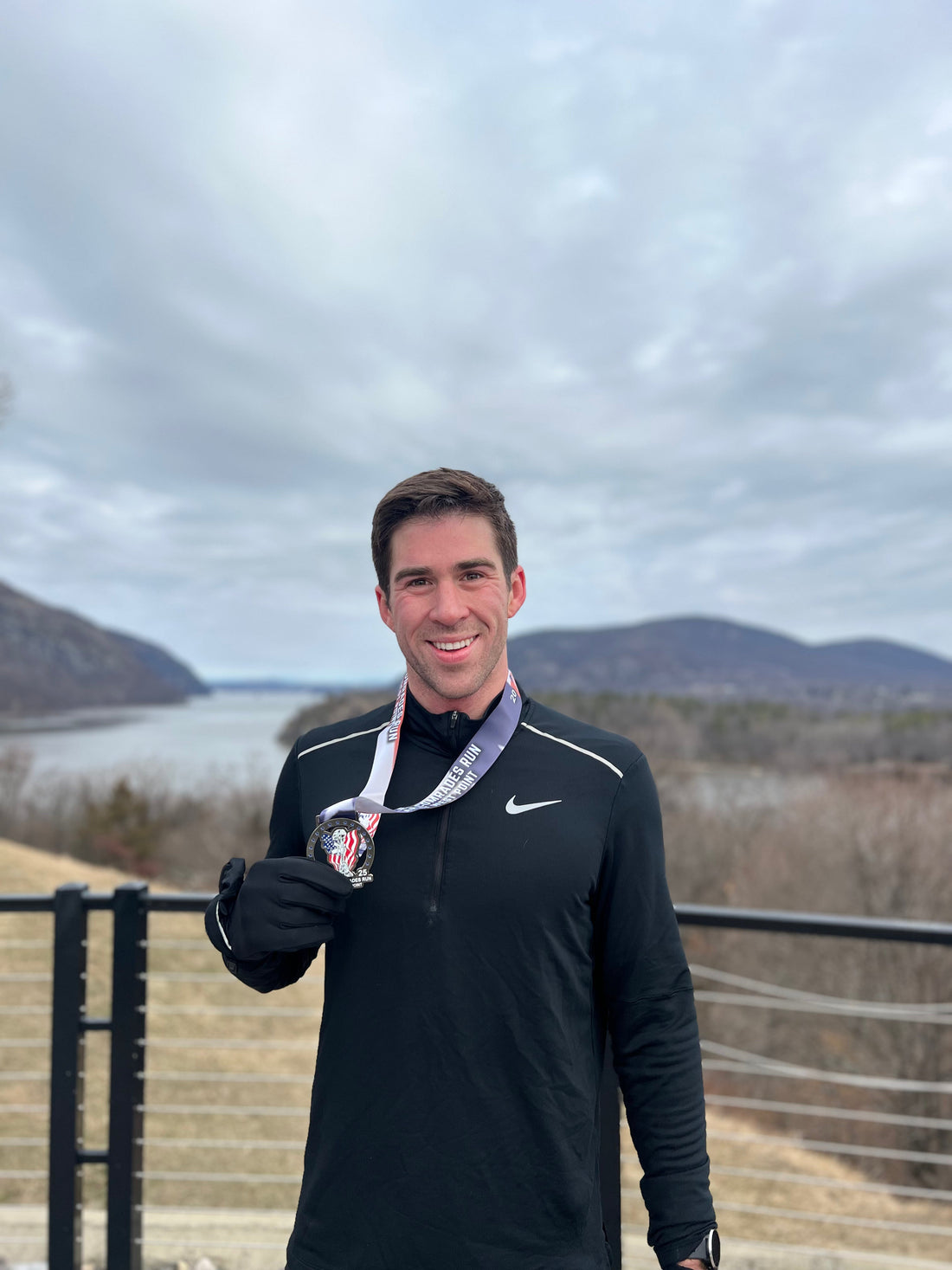
The Great Day Blog
Are we Done Yet?
I have a special brand of commitment issue.
This issue is that I have almost no fear of it.

It’s like the time I moved to France to learn the language instead of just taking a class in New York City.
Or when I, a certified luddite, learned to code and became a software engineer because . . . well, we’re still unsure.
Or the fact that I’ve been in a 17-year-long relationship with my husband.
It’s an all-or-nothing mentality, which is why I’ve always been drawn to marathon training.
It's like a crashing wav
Getting miles in while on vacation in Athens before the Limestone 50 Ultra-Marathon (August 2024). That’s called commitment.
a gradual, focused build-up of momentum culminating in the powerful surge of race day, followed by the inevitable and welcomed crash.
Afterwards, there’s nothing to do but rest and recover. Take an off-season. Enjoy not running for a while.
Knowing there's a definitive end date allows me to push relentlessly.
And then you start the next cycle from the bottom once again.
Physiologically, aiming for more than two or three marathons run at your potential annually is generally a fool's errand.
Some athletes - mostly pros with super high mileage, like CJ Albertson - can push the envelope here. For most of us, we’re better focusing our energy on a few races that count.
The good news is this is not the case for half marathons. You can run multiple in a season, likely 4-6 weeks apart, and even gain a little fitness in between.
The bad news - at least those wired like myself - is that it means multiple pressure-filled race weekends with all-out efforts. Staying motivated can be a brand new challenge late into the cycle after you’ve already raced your heart out.
I have two races under my belt this cycle.
The Fallen Comrades* and NYC Half Marathons. Jersey City is on deck.
Fallen Comrades Half Marathon with a 1:28:11. All I can say is…holy hills.
I’m used to one A (priority) race per cycle and mentally, I’m finding it difficult to stay focused. I vividly recall thinking as I slogged past the mile 9 marker at the NYC Half “How the hell am I supposed to do this again?”.
This "in-between" period, whether navigating multiple halfs or marathons, can feel like purgatory. The necessary "play it by ear" approach, constantly adjusting runs based on recovery, breeds uncertainty and can be mentally taxing.
Yet running, at its core, is about exploring our limits. Or so I tell myself as I navigate this motivational gray zone.
As a coach, I can tell you this is where you need to be strategic.
As a runner, I can tell you it is sometimes easier said than done.

After the 2014 USAT Collegiate National Championships (olympic distance triathlon) at 21 years old in Tempe Arizona. Regretting all life choices.
Despite the struggles, I have been able to successfully maintain my motivation by sticking with the following:
-
Plan with Flexibility: Create a framework for the in-between time, but be prepared to adjust based on your body's feedback. A loose plan is better than no plan at all.
-
Focus on the Present Run: Avoid feeling overwhelmed by future races or long runs. Concentrate your energy on the task at hand.
-
Lower the Activation Energy: Make it as easy as possible to get out the door. Lay out your gear, arrange to meet running partners – remove barriers.
-
Engage Your Mind: Read running-related content, journal about your challenges and goals, connect with enthusiastic running friends, and visualize successful future races.
-
Prioritize the Small Things: Habitually incorporate recovery routines like rolling and stretching, schedule PT exercises, and plan nutritious meals. These seemingly minor details are crucial for long-term consistency.
You could argue that all that advice works for any running-related burnout.
From my POV, the difference is when you’re between races, it can feel like there’s no point left to keep going. You already gave it your best. You start to rationalize that past-you was overly ambitious.
It seemed like a good idea to sign up for these races at the time. I hear it all the time.
But there’s more in your control than you’d expect. And there’s a lot to learn from moving through this unique brand of burnout.
At least, that’s how I’m coaching myself. And Jersey City will be the ultimate test.
Coach's Training Journal - Plan this Week (Week 13/15)
Upcoming races: NYC Half, Jersey City Half, Big Sur Marathon
Goals: 1:16:xx half marathon
Running - 60 miles
Lifting - 2 hours
Cross-Training - 50 minutes
Stretching & Foam Rolling - 30 minutes
Heat Adaptation - 30 minutes
Workout of the week:
V.O2 Max session - 6x 800m @ 5k [2:30 easy]
There’s a special place V.O2 Max sessions this late in a half/marathon training cycle that often gets bastardized on social media and run clubs alike. For long term success in distance running, you’re better off focusing on higher volume of easy running. This would include a periodized speed approach, as well.2
However, you can make quick improvements to your V.O2 max, the maximum rate at which your body can consume oxygen. These improvements can translate to a slightly increased speed at your lactate threshold and therefore to slightly faster times on race day. However, the intensity of these workouts places a significant demand on the body, and the benefits tend to plateau quickly.
This session knocked me on my ass. It had ample rest, but with paces hovering around 5:15 per mile, you feel absolutely gassed on each rep.
